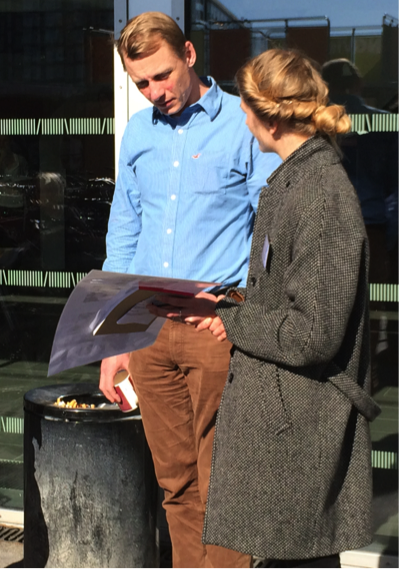Instructions
The students choose an environment and a target group they want to study further and spend 2-5 hours on the fieldwork. They can work independently or in groups. The following guide might be adjusted to the specific course.
Time: 2-5 hours
Location: University, urban spaces, festivals, conferences
Interviews
- Short interviews of 5-10 minutes duration
- 10-20 informants
- Interviews are based on a short interview guide with room for spontaneity depending on the informant’s answers
- The informants are interviewed without having made an appointment beforehand. This ensures spontaneity.
- Semi-structured interviews work well on their own, but short workshop methods or displaying of images during the interviews might also be added as methods.
Observations
- Interviews combined with observations in order to get a picture of the target group’s behaviour within the environment they frequent.
- The observations might be of specific informants or of an environment
Documentation
- Photography, video recordings, sound recordings, field notes
Afterwards the students collect their data from documentation and analyse the material. They might analyse their material by identifying patterns and building up personas.
Using images and quotes is a good way to present the insights gained from an etnoraid.
Worth Considering
It is important that the students observe and analyse with an open mind, but at the same time they should avoid overanalysing as that might block out important insights.
Etnoraids can be arranged as a series, meaning that several etnoraids are carried out during a short period of time or that follow up etnoraids are done during the length of a specific project. It is possible to combine etnoraids with other qualitative methods such as the User Journey, the Qualitative Interview or Photo Safari.
Preparation
Interview guide: Make a semi-structured interview overview of the most important themes you wish to study. The etnoraid is not a vox pop and as such the questions should be open.
Observation guide: Make an observation overview concerning the most important things you wish to study. Since etnoraids only take short time you do not have time to observe everything and therefore the observations need to have a focus.
Materials for documentation: Pen and paper, camera and perhaps a voice recorder (a smart phone is able to do job of recording and taking pictures).
If you are doing etnoraids within a private space you might need to make arrangements beforehand.


